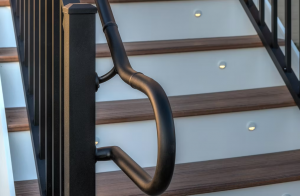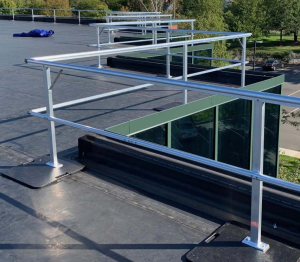A Detailed Inspection of Handrails: Ensuring Safety and Longevity
Handrails are an essential component of staircases, ramps, and walkways, providing safety and support to users. Regular inspections of handrails are very important to maintain the safety and aesthetics.
1. Material Condition
1.1 Corrosion and Rust:
Review for signs of erosion and rust for metal handrails, such as those made of stainless steel or aluminum. Rust can debilitate the handrail over time and should be tended to expeditiously.
1.2 Cracks and Splits:
For wooden handrails, check for cracks, splits, and other signs of damage. These can weaken the handrail and pose a safety risk. Small cracks can be repaired with wood filler, but extensive damage may require replacement of the affected section.
1.3 Surface Finish:
Examine the surface finish of the handrail. Look for peeling, chipping, or fading for painted or coated handrails. Repainting or recoating may be necessary to restore the handrail’s appearance and protect it from the elements.
2. Handrail Components
2.1 Handrail Brackets:
Review the handrail brackets for signs of wear or harm. Guarantee they are safely joined and give satisfactory bolster. Supplant any harmed or worn brackets to keep up the handrail’s soundness.
2.2 End Caps and Fittings:
Check the conclusion caps and fittings for legitimate establishment and condition. Loose or lost conclusion caps can be a security risk and should be reattached or supplanted. Guarantee that all fittings are secure and free from harm.
2.3 Joint Connections:
Examine and ensure the joints that are secureand properly alinged. Loose or misaligned joints can compromise the handrail’s integrity and should be repaired promptly.

3. Compliance with Safety Standards
3.1 Height and Clearance:
Measure the height of the handrail to ensure it meets local building codes and standards. Handrails should be at a height that provides adequate support to users, typically between 34 and 38 inches for residential applications. Also, check for proper clearance between the handrail and the wall, usually around 1.5 inches.
3.2 Smooth and Continuous Surface:
It would help if you verified that the handrail provides a smooth and consecutive surface along its entire length. There should be no sharp edges, protrusions, or interruptions that could cause injury or hinder movement.
By thoroughly examining the structural integrity, material condition, and compliance with safety standards, you can identify and address potential issues before they become serious hazards. Regular inspections and maintenance will help maintain the handrail’s performance and appearance, providing reliable support and safety for users in both residential and commercial settings. Remember, a well-maintained handrail not only enhances safety but also adds to the overall aesthetic appeal of the space.

 +86 159 6420 9667
+86 159 6420 9667  sales@haxrailing.com
sales@haxrailing.com 



